Stefan Heimersheim
Transformers Don't Need LayerNorm at Inference Time: Scaling LayerNorm Removal to GPT-2 XL and the Implications for Mechanistic Interpretability
Jul 03, 2025Abstract:Layer-wise normalization (LN) is an essential component of virtually all transformer-based large language models. While its effects on training stability are well documented, its role at inference time is poorly understood. Additionally, LN layers hinder mechanistic interpretability by introducing additional nonlinearities and increasing the interconnectedness of individual model components. Here, we show that all LN layers can be removed from every GPT-2 model with only a small increase in validation loss (e.g. +0.03 cross-entropy loss for GPT-2 XL). Thus, LN cannot play a substantial role in language modeling. We find that the amount of fine-tuning data needed for LN removal grows sublinearly with model parameters, suggesting scaling to larger models is feasible. We release a suite of LN-free GPT-2 models on Hugging Face. Furthermore, we test interpretability techniques on LN-free models. Direct logit attribution now gives the exact direct effect of individual components, while the accuracy of attribution patching does not significantly improve. We also confirm that GPT-2's "confidence neurons" are inactive in the LN-free models. Our work clarifies the role of LN layers in language modeling, showing that GPT-2-class models can function without LN layers. We hope that our LN-free analogs of the GPT-2 family of models will enable more precise interpretability research and improve our understanding of language models.
Detecting Strategic Deception Using Linear Probes
Feb 05, 2025



Abstract:AI models might use deceptive strategies as part of scheming or misaligned behaviour. Monitoring outputs alone is insufficient, since the AI might produce seemingly benign outputs while their internal reasoning is misaligned. We thus evaluate if linear probes can robustly detect deception by monitoring model activations. We test two probe-training datasets, one with contrasting instructions to be honest or deceptive (following Zou et al., 2023) and one of responses to simple roleplaying scenarios. We test whether these probes generalize to realistic settings where Llama-3.3-70B-Instruct behaves deceptively, such as concealing insider trading (Scheurer et al., 2023) and purposely underperforming on safety evaluations (Benton et al., 2024). We find that our probe distinguishes honest and deceptive responses with AUROCs between 0.96 and 0.999 on our evaluation datasets. If we set the decision threshold to have a 1% false positive rate on chat data not related to deception, our probe catches 95-99% of the deceptive responses. Overall we think white-box probes are promising for future monitoring systems, but current performance is insufficient as a robust defence against deception. Our probes' outputs can be viewed at data.apolloresearch.ai/dd and our code at github.com/ApolloResearch/deception-detection.
Open Problems in Mechanistic Interpretability
Jan 27, 2025



Abstract:Mechanistic interpretability aims to understand the computational mechanisms underlying neural networks' capabilities in order to accomplish concrete scientific and engineering goals. Progress in this field thus promises to provide greater assurance over AI system behavior and shed light on exciting scientific questions about the nature of intelligence. Despite recent progress toward these goals, there are many open problems in the field that require solutions before many scientific and practical benefits can be realized: Our methods require both conceptual and practical improvements to reveal deeper insights; we must figure out how best to apply our methods in pursuit of specific goals; and the field must grapple with socio-technical challenges that influence and are influenced by our work. This forward-facing review discusses the current frontier of mechanistic interpretability and the open problems that the field may benefit from prioritizing.
Interpretability in Parameter Space: Minimizing Mechanistic Description Length with Attribution-based Parameter Decomposition
Jan 24, 2025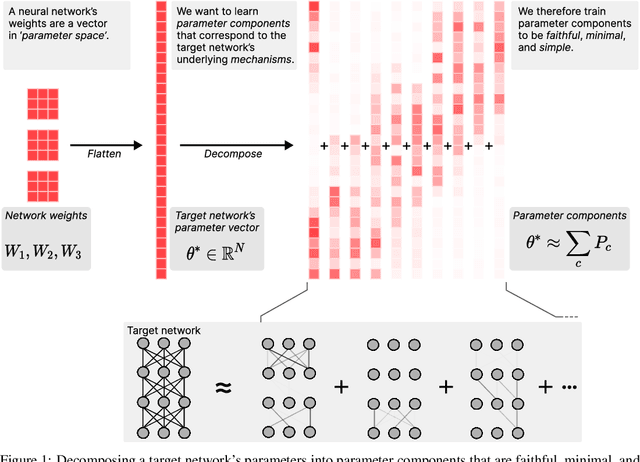

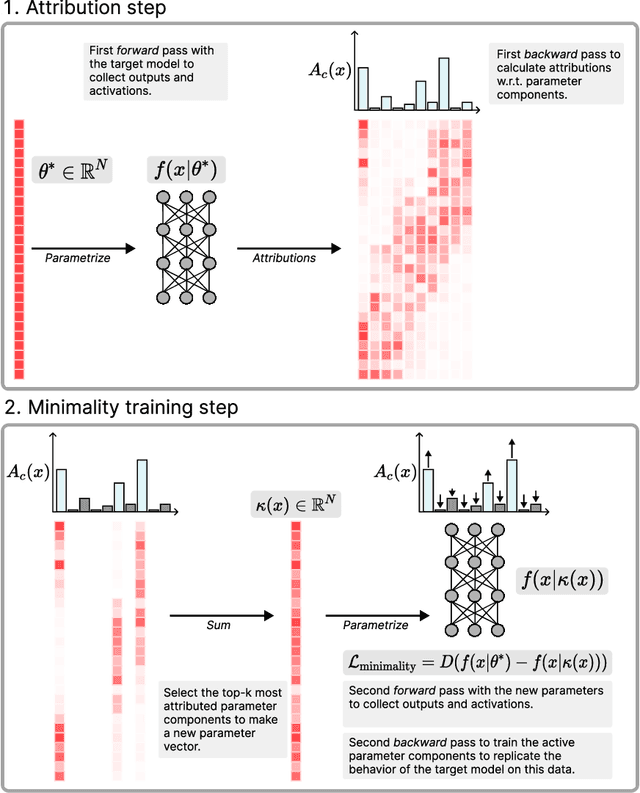
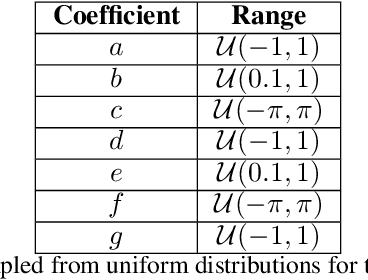
Abstract:Mechanistic interpretability aims to understand the internal mechanisms learned by neural networks. Despite recent progress toward this goal, it remains unclear how best to decompose neural network parameters into mechanistic components. We introduce Attribution-based Parameter Decomposition (APD), a method that directly decomposes a neural network's parameters into components that (i) are faithful to the parameters of the original network, (ii) require a minimal number of components to process any input, and (iii) are maximally simple. Our approach thus optimizes for a minimal length description of the network's mechanisms. We demonstrate APD's effectiveness by successfully identifying ground truth mechanisms in multiple toy experimental settings: Recovering features from superposition; separating compressed computations; and identifying cross-layer distributed representations. While challenges remain to scaling APD to non-toy models, our results suggest solutions to several open problems in mechanistic interpretability, including identifying minimal circuits in superposition, offering a conceptual foundation for 'features', and providing an architecture-agnostic framework for neural network decomposition.
Investigating Sensitive Directions in GPT-2: An Improved Baseline and Comparative Analysis of SAEs
Oct 16, 2024



Abstract:Sensitive directions experiments attempt to understand the computational features of Language Models (LMs) by measuring how much the next token prediction probabilities change by perturbing activations along specific directions. We extend the sensitive directions work by introducing an improved baseline for perturbation directions. We demonstrate that KL divergence for Sparse Autoencoder (SAE) reconstruction errors are no longer pathologically high compared to the improved baseline. We also show that feature directions uncovered by SAEs have varying impacts on model outputs depending on the SAE's sparsity, with lower L0 SAE feature directions exerting a greater influence. Additionally, we find that end-to-end SAE features do not exhibit stronger effects on model outputs compared to traditional SAEs.
Evolution of SAE Features Across Layers in LLMs
Oct 11, 2024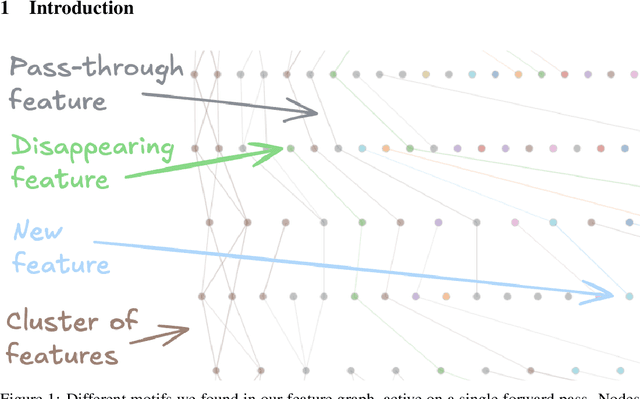

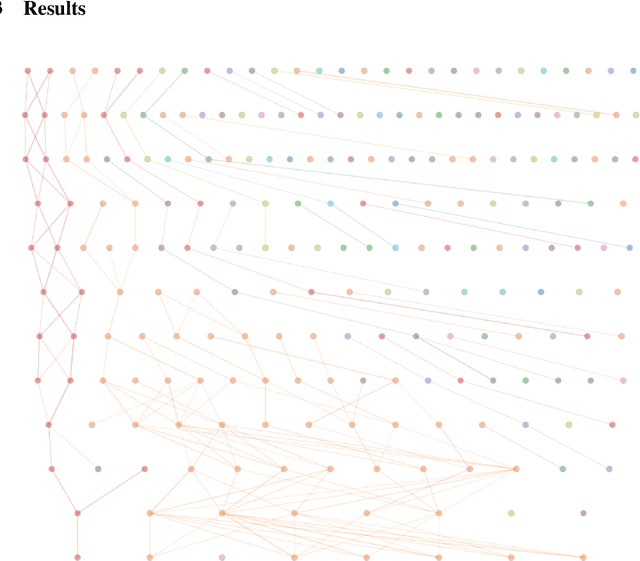
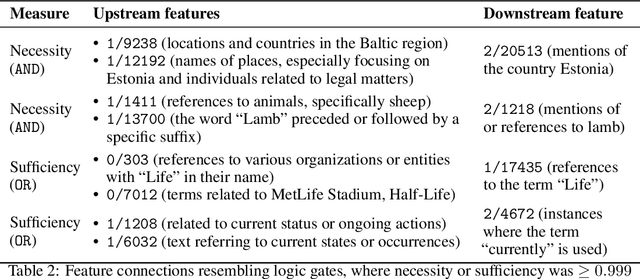
Abstract:Sparse Autoencoders for transformer-based language models are typically defined independently per layer. In this work we analyze statistical relationships between features in adjacent layers to understand how features evolve through a forward pass. We provide a graph visualization interface for features and their most similar next-layer neighbors, and build communities of related features across layers. We find that a considerable amount of features are passed through from a previous layer, some features can be expressed as quasi-boolean combinations of previous features, and some features become more specialized in later layers.
Characterizing stable regions in the residual stream of LLMs
Sep 26, 2024



Abstract:We identify "stable regions" in the residual stream of Transformers, where the model's output remains insensitive to small activation changes, but exhibits high sensitivity at region boundaries. These regions emerge during training and become more defined as training progresses or model size increases. The regions appear to be much larger than previously studied polytopes. Our analysis suggests that these stable regions align with semantic distinctions, where similar prompts cluster within regions, and activations from the same region lead to similar next token predictions. This work provides a promising research direction for understanding the complexity of neural networks, shedding light on training dynamics, and advancing interpretability.
Using Degeneracy in the Loss Landscape for Mechanistic Interpretability
May 17, 2024Abstract:Mechanistic Interpretability aims to reverse engineer the algorithms implemented by neural networks by studying their weights and activations. An obstacle to reverse engineering neural networks is that many of the parameters inside a network are not involved in the computation being implemented by the network. These degenerate parameters may obfuscate internal structure. Singular learning theory teaches us that neural network parameterizations are biased towards being more degenerate, and parameterizations with more degeneracy are likely to generalize further. We identify 3 ways that network parameters can be degenerate: linear dependence between activations in a layer; linear dependence between gradients passed back to a layer; ReLUs which fire on the same subset of datapoints. We also present a heuristic argument that modular networks are likely to be more degenerate, and we develop a metric for identifying modules in a network that is based on this argument. We propose that if we can represent a neural network in a way that is invariant to reparameterizations that exploit the degeneracies, then this representation is likely to be more interpretable, and we provide some evidence that such a representation is likely to have sparser interactions. We introduce the Interaction Basis, a tractable technique to obtain a representation that is invariant to degeneracies from linear dependence of activations or Jacobians.
How to use and interpret activation patching
Apr 23, 2024

Abstract:Activation patching is a popular mechanistic interpretability technique, but has many subtleties regarding how it is applied and how one may interpret the results. We provide a summary of advice and best practices, based on our experience using this technique in practice. We include an overview of the different ways to apply activation patching and a discussion on how to interpret the results. We focus on what evidence patching experiments provide about circuits, and on the choice of metric and associated pitfalls.
Towards Automated Circuit Discovery for Mechanistic Interpretability
Apr 28, 2023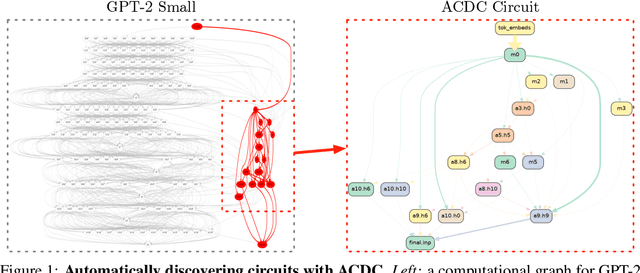
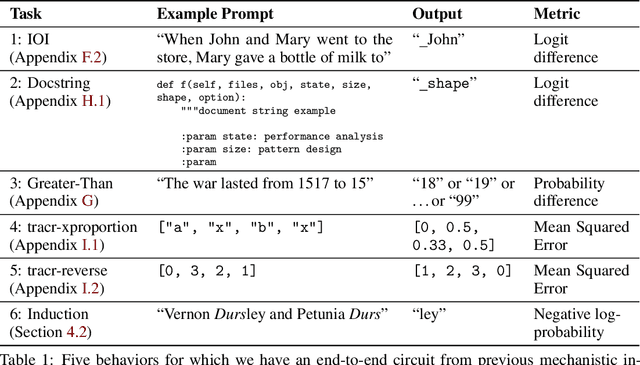
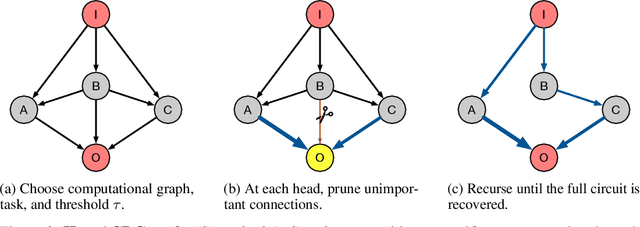

Abstract:Recent work in mechanistic interpretability has reverse-engineered nontrivial behaviors of transformer models. These contributions required considerable effort and researcher intuition, which makes it difficult to apply the same methods to understand the complex behavior that current models display. At their core however, the workflow for these discoveries is surprisingly similar. Researchers create a data set and metric that elicit the desired model behavior, subdivide the network into appropriate abstract units, replace activations of those units to identify which are involved in the behavior, and then interpret the functions that these units implement. By varying the data set, metric, and units under investigation, researchers can understand the functionality of each neural network region and the circuits they compose. This work proposes a novel algorithm, Automatic Circuit DisCovery (ACDC), to automate the identification of the important units in the network. Given a model's computational graph, ACDC finds subgraphs that explain a behavior of the model. ACDC was able to reproduce a previously identified circuit for Python docstrings in a small transformer, identifying 6/7 important attention heads that compose up to 3 layers deep, while including 91% fewer the connections.
 Add to Chrome
Add to Chrome Add to Firefox
Add to Firefox Add to Edge
Add to Edge